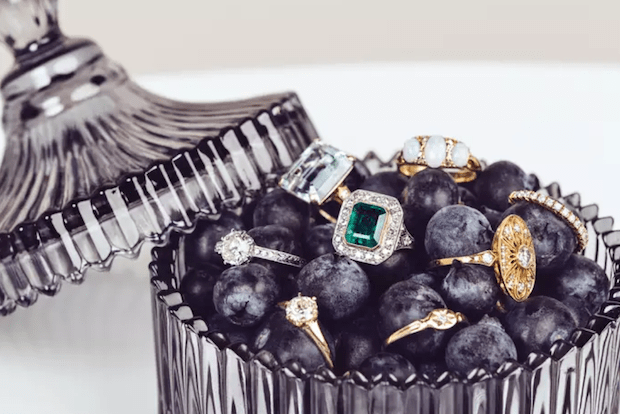So many brides-to-be have their hearts set on a vintage engagement ring. There's something so romantic about wearing a ring that has a past of its own, and something so charming about a pre-loved ring that you often don't find in a brand new rock. But shopping for a vintage engagement ring can be daunting. Unless you're lucky enough to inherit an heirloom ring you adore, you'll have to go out and find your own period piece - and that's where we come in! We've put together great tips and advice for shopping for a period antique engagement ring.
Buying a Vintage Engagement Ring
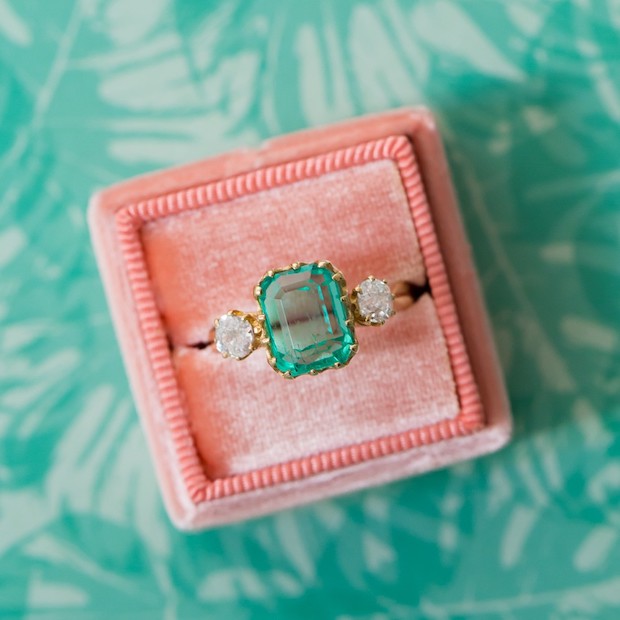
1. Know the Difference Between Fine Jewellery & Costume
Lots of the vintage jewellery you see in antique shops is actually costume jewellery, this means it might be gold-plated silver (or brass) rather than solid gold, or have non-precious gemstones or crystal, rather than precious stones. Costume jewellery can be fabulous, but few couples choose it for their engagement ring, as it's less valuable than fine jewellery, and won't age as well. Asking for period fine jewellery, rather than vintage jewellery (which can mean fine or costume jewellery), should direct you to the right place.
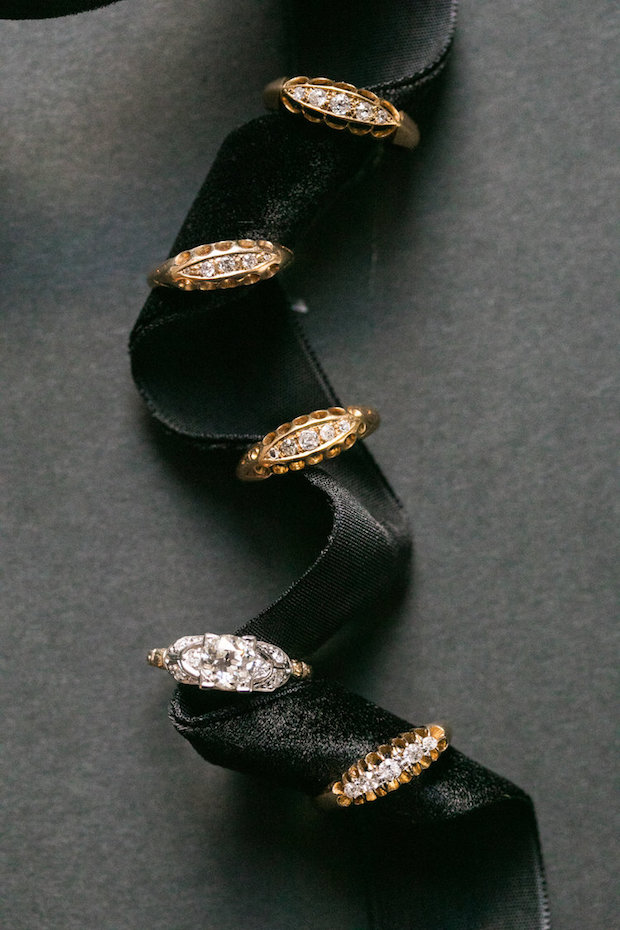
2. Shop in Reputable Places
Most cities have a few great antique jewellery shops and auctioneers, and there are some online stores with fantastic reputations, too (although buying an antique ring online is a more complicated process!) Buying from a quality, reputable jeweller doesn't just make a difference in the choice of rings, it also means you'll receive trustworthy guidance and advice. Ask your friends for recommendations and check out some reviews before you go shopping. You'll find a list of some of our favourite jewellery shops in Ireland here, our favourites for antique jewellery include O'Reilly's Auction Rooms and Commins & Co.
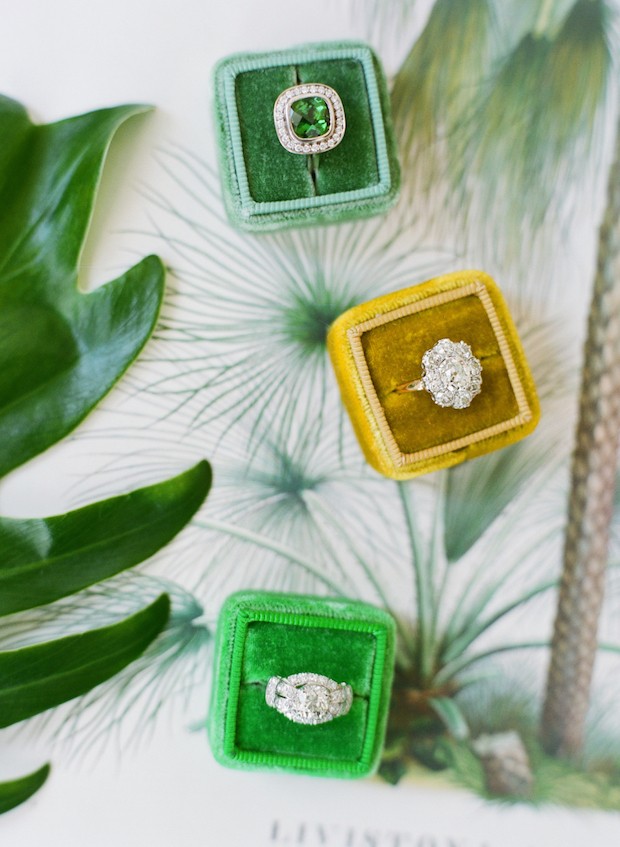
3. Do Your Homework on Diamonds
It's important to do some research before you hit the shops, particularly if you're planning to buy a diamond ring, in which case you should familiarise yourself with the Four Cs - colour, clarity, carat and cut. Antique and vintage diamonds tend to have old-fashioned cuts, which don't always optimise the brilliance of the stone, and are more likely to have visible flaws, but this can actually add to their charm! Whatever kind of ring you're after, doing your research in advance should help you set your expectations. If there's a particular era, style or gemstone you're interested in, read up on it, and save a few images to show your jeweller.

4. Get the Right Paperwork
Ideally, your ring should come with a gemological report, and paperwork such as receipts, insurance policies and repair records, but this isn't always possible. Ask your jeweller what paperwork they can provide, and whether there is a qualified gemologist available to give you an honest assessment on the piece.

5. Identify Styles or Stones
Whether you're looking for your own engagement ring, or shopping for your other half, narrowing your search will help you to find what you're looking for, without being totally overwhelmed. Look at jewellery from different eras and see if there's a particular style that resonates - Victorian, Art Deco etc. Alternatively, you might decide you want an emerald, ruby, garnet or sapphire gemstone, and you can take your search from there. Check out our engagement ring style guide, and A-Z of gemstones feature for ideas.
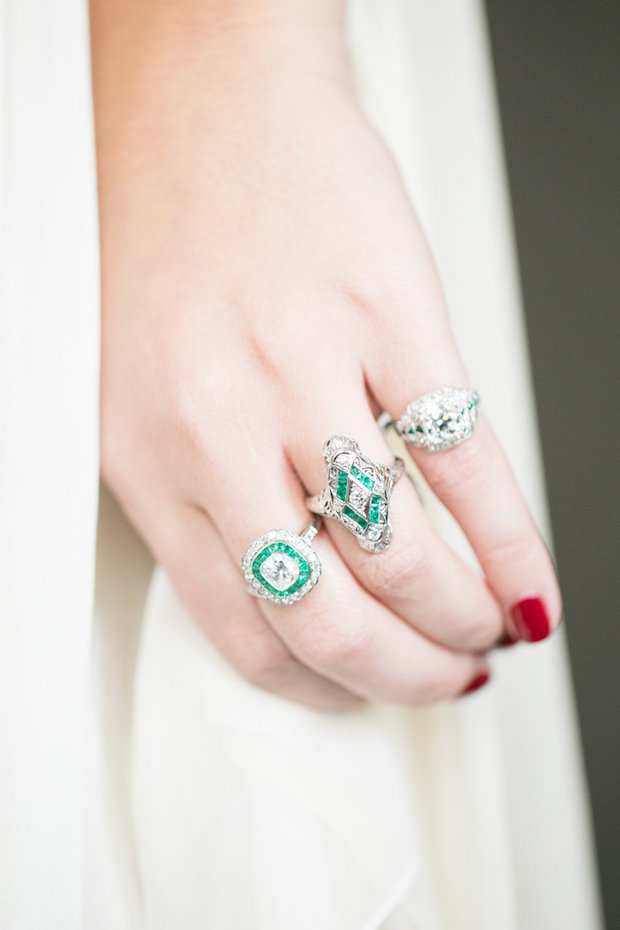
6. Avoid Common Mistakes
When buying an antique or vintage engagement ring, it's important not to mistake a more modern replica for an older piece - for example, the art deco style (dating from around 1920 to 1935) was echoed in many new engagement rings in the 1970s. You can avoid this by asking the jeweller what year or era the ring is from. It's also a good idea to check that the setting feels secure, particularly with more fragile stones like emeralds. Oh, and we recommend avoiding pearls and opals - pretty as they are, they don't live up to the wear and tear of an everyday ring.
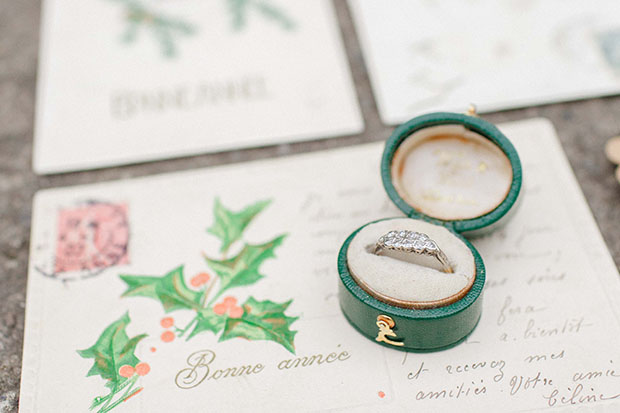
7. Think Vintage Gemstones
If you don't like the settings on any antique engagement rings, but still like the idea of something with a history, then consider a vintage stone. Many gemologists and jewellers remake old items into new pieces and often don't use all the stones.
One Fab Day Editor Jessica sourced a Colombian emerald for her engagment ring in just this way and had it set in a contemporary setting. The stone had been part of an antique pair of earrings from 1860, which was remade into a necklace. Best of all as they had been set in earrings there was no damage to the stone, which can be a common pitfall for emeralds. This also works if you have heirloom family pieces. Ask a bespoke jewellery designer to rework it into an engagement ring. Natasha Sherling, McCaul Goldsmiths and Aoife O'Mahony Design are three of our favourites.

8. Cast a Wide Net
If you have a particular style in mind, you may have to look a bit further to find it. Don't be afraid to try auctions, there are often unusual rings to be found, and great deals to be had. In many cases, you should be able to visit the auction rooms in advance to try on the rings you're interested in. And don't be afraid to ask your local antique jeweller if you're after something specific - they'll be happy to keep an eye out for you.
More helpful reads and advice on engagement rings:
- How much you should spend on an engagement ring?
- Why you should consider a token engagement ring
- How to work out someone's ring size
- Where to buy an engagement ring in Ireland
- How to design your own engagement ring
- Why you should think twice about proposing with an inherited ring
- What to do if you don't love your engagement ring
- Engagement rings for men
- The ultimate guide to engagement ring styles
- Tips for buying an engagement ring online

